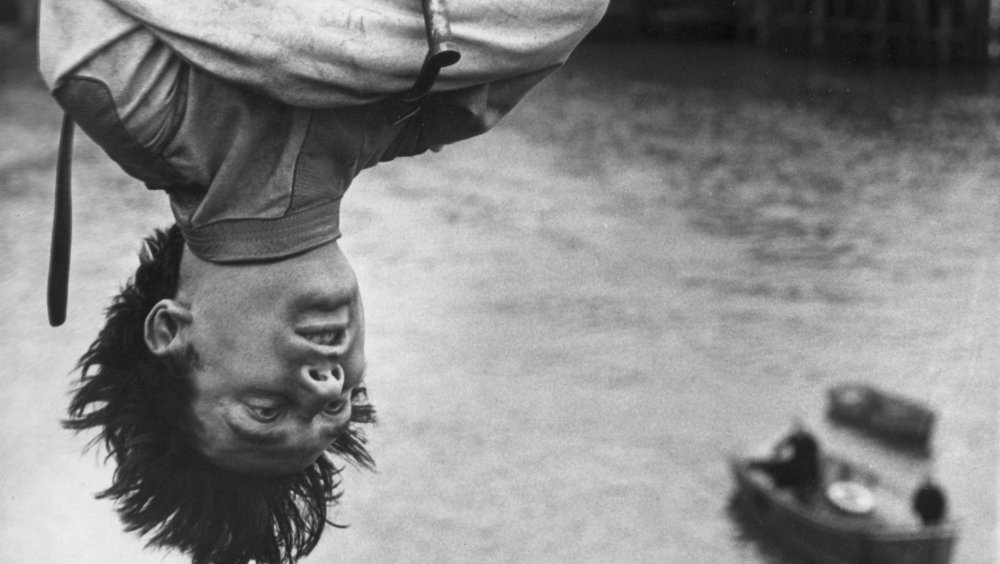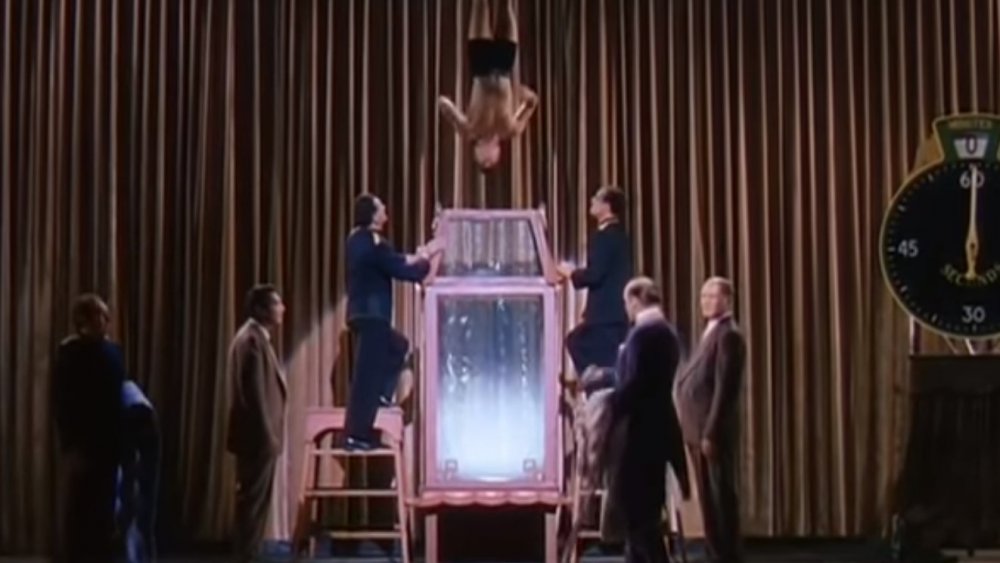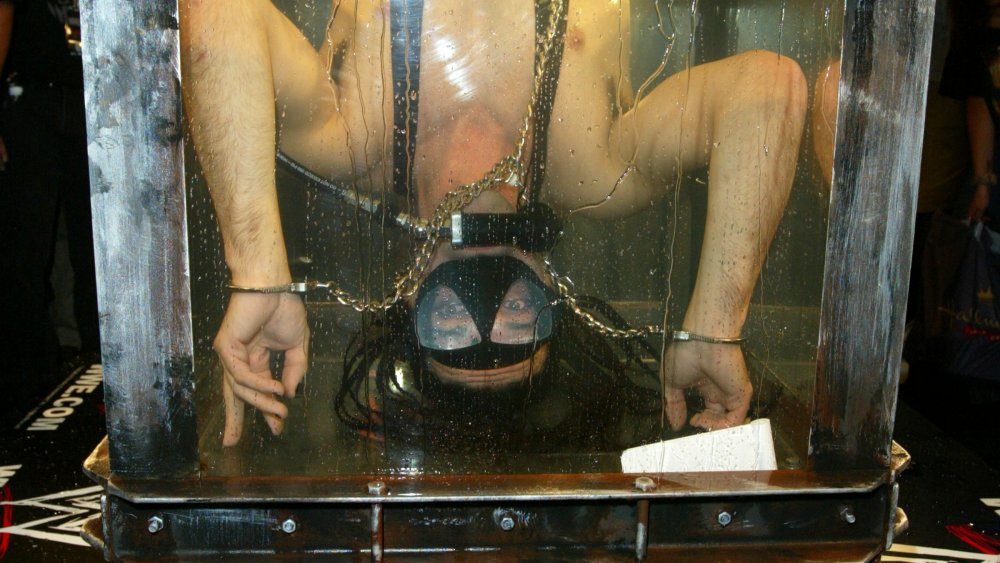The Truth About Harry Houdini's Greatest Trick
Harry Houdini lives on in the world's mind as a master of the impossible. Over the course of his career, he became a wizard with a deck of cards, a champion of the escape arts, and could withstand a blow to the stomach without suffering any adverse effects like, nine times out of 10. But of all of the feats and illusions that Houdini performed, one stood above all others. And it stood on its head, underwater, which is really just showing off.
It was called by many names, but most famously known as the Chinese Water Torture Cell, which, yeah. Problematic. According to the biography The Secret Life of Houdini: The Making of America's First Superhero, the trick was first performed as part of a one act play that Houdini produced titled Houdini Upside Down!, back when a title really meant something and nobody had time to bury the lede.
Now you see Harry Houdini, now you see Harry Houdini damp
The act, as described by the magician's posthumous website, went as follows: Houdini would, in high dramatic fashion, present the audience with a tall, rectangular tank with thick glass sides. He would leave the stage and change into his swimming trunks while his assistants filled the tank with water from high-pressure hoses and fancy ornamental jugs. Re-emerging, Houdini would be placed in restraints, affixed to a pulley system by his ankles, and hoisted into the air. He would then be lowered into the water upside down, presumably eliciting cries from the audience of "Oh, now I get the poster!"
And then, the big moment: curtains were drawn in front of the tank so that nobody could see what was going on. Yes, you read that right. The most talked about trick produced by the greatest performer of his age involved hiding a celebrity behind a curtain and not letting anybody see what he was doing. What can we say? Entertainment is subjective.
In any case, after two minutes of what was described at the time as "a heart-racing thrill" and would today be referred to as "dead air," Houdini would emerge, thoroughly not drowned.
Want an escape act this good today? Don't hold your breath
The escape was achieved through a marriage of multiple skills: Houdini, famously lithe and well-practiced in escapology, had several advantages already. The swift placement of the curtain helped to mask the fact that Harry's submersion would invariably displace a lot of water, leaving an ample bubble of air for the performer to squirm upwards and suckle on. This was complemented by the fact that the cell itself wasn't particularly water-tight, a fact only realized when the prop was used as an aquarium by museum owners in the '70s, with soggy results.
Since the top of the cell was made up of the stocks holding Houdini in place, he was able to circumvent problems faced by earlier water escapes which used heavy, complicated lids. The efficiency of the setup meant less time holding his breath, waiting for the curtains to close, and more time to perform his escape. And it didn't hurt that the keys used to "lock" Harry in place actually triggered a mechanism that released the clamps around his ankles.
In essence, the whole thing came down to ingenuity and a whole lot of practice. The act had such an impact that magicians are still replicating it to this day.


